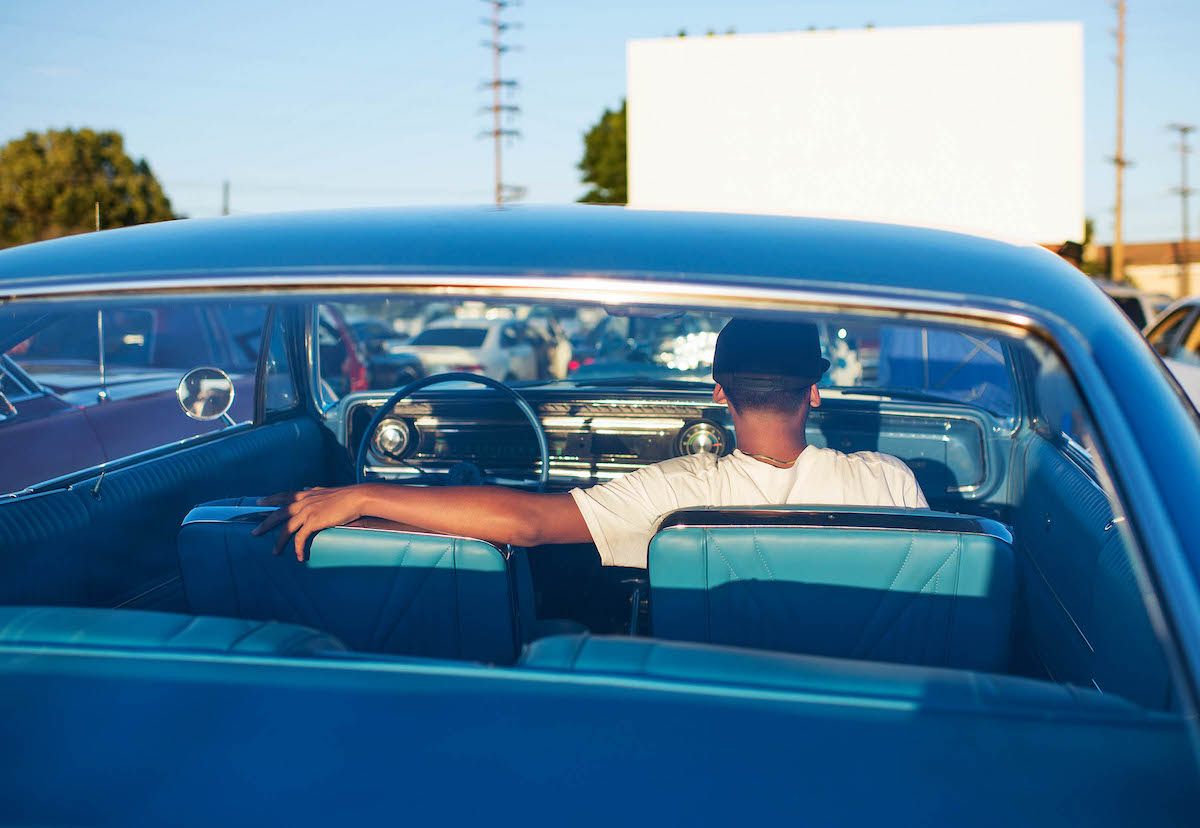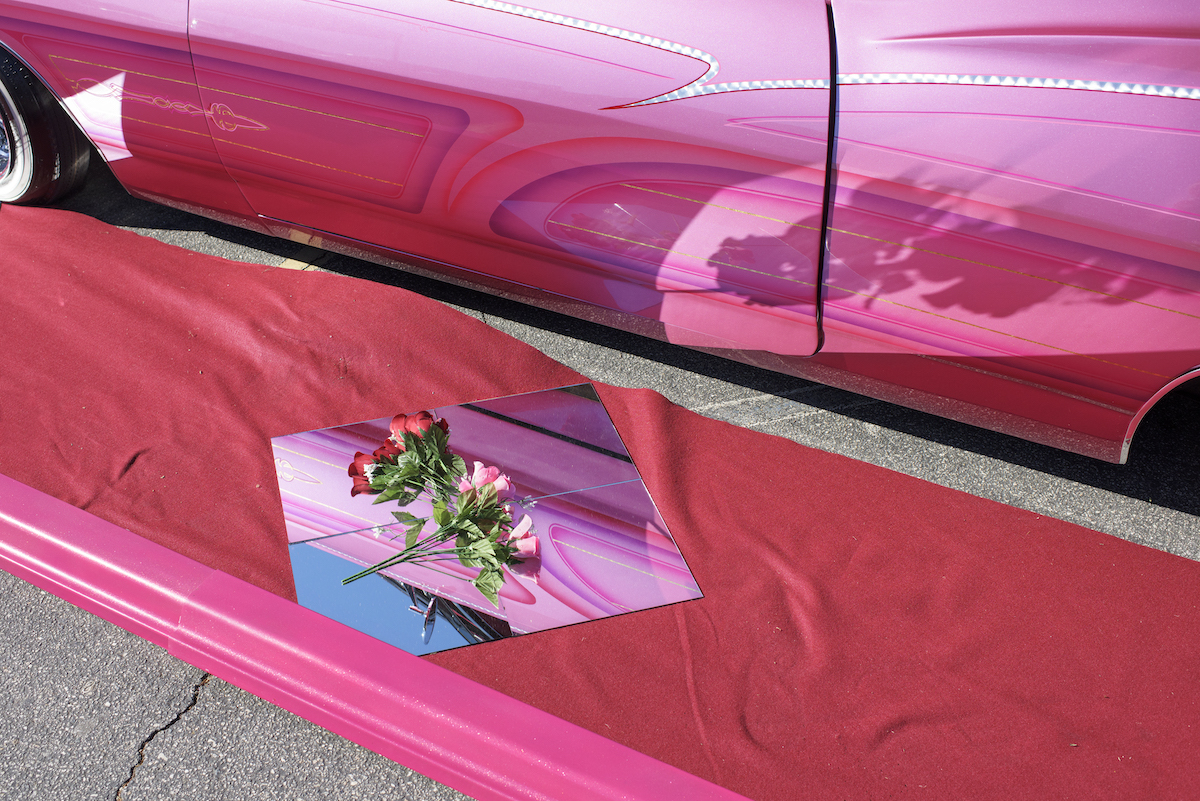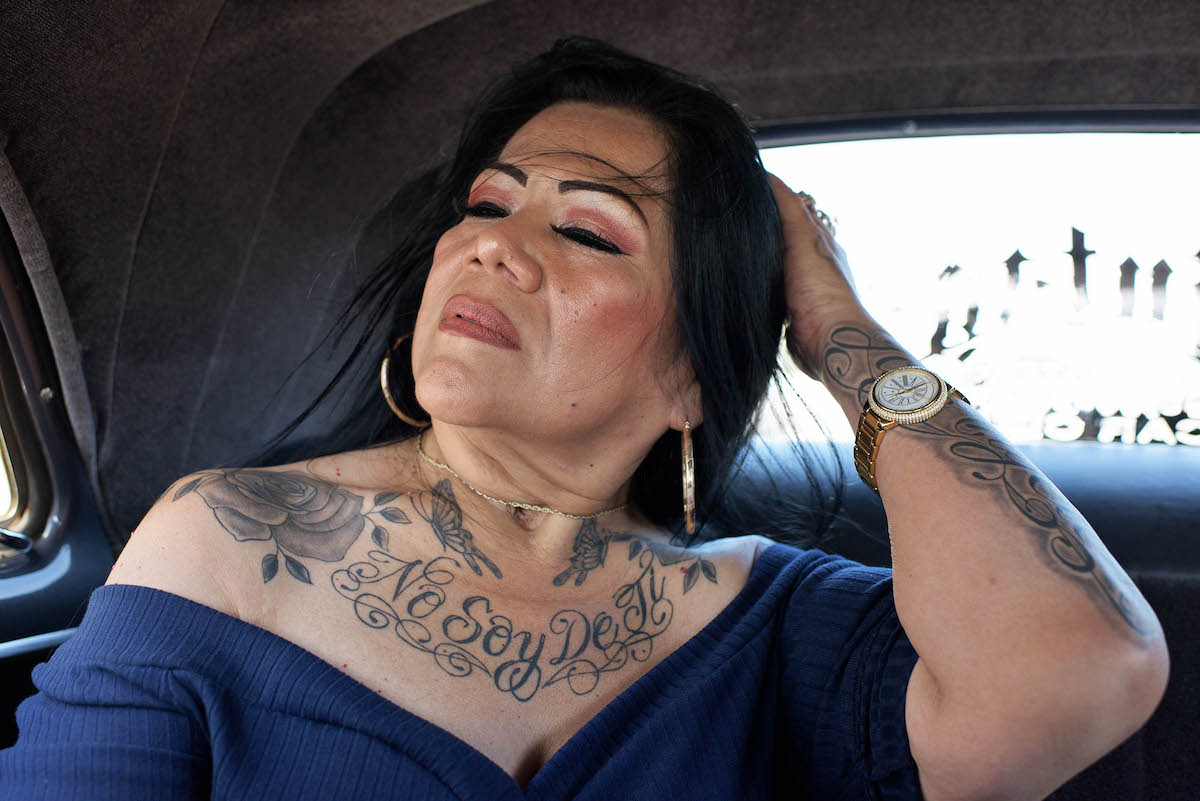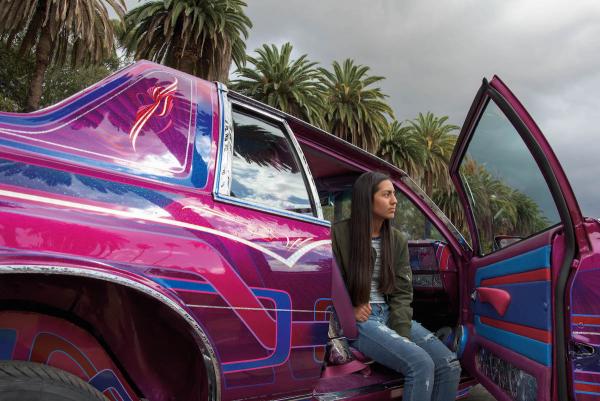Known for her quiet portraits of American cultural movements, Kristin Bedford is a Los Angeles–based photographer whose latest publication, Cruise Night, explores the city’s Mexican American lowrider community. Through a distinctive female vantage point, the book gives us a look at members of this prolific movement and their customized cars, set against the L.A. cityscape.
“She has earned the respect of the lowrider community by not just making a book but by living the life with us,” said Juan Ramirez, co-founder of the Los Angeles Lowrider Community and president of Just Memories Car Club Los Angeles. “We will always be thankful that she’s one of the very few that got it right. Like the saying goes, ‘one rides, we all ride’ and she’s riding along with us.”
We had the opportunity to talk to Bedford about the process of creating the series Cruise Night (several photographs from which are in LACMA’s collection) and her resulting photo book.

What is Cruise Night about?
Cruise Night is a collection of intimate and unstaged photographs that explore the Los Angeles Mexican American lowrider community. From 2014 to 2019 I attended hundreds of lowrider cruise nights, car shows, quinceañeras, weddings, and funerals. I hope that my images, a cross between aesthetics and social realism, will offer a new visual narrative around the lowrider tradition and prevalent societal stereotypes.
What is it about Los Angeles lowrider culture that drew you to it and made you want to photograph it?
My path to lowriding originates from my interest in the layered and nuanced ways that customizing a car reflects decades of political, cultural, and creative self-expression in this community. While lowriding is a worldwide phenomenon, for Mexican Americans in Los Angeles, it has a unique significance. For over 70 years, they have been expressing their identity through this distinct car culture. I wanted to photograph and understand how transforming a car, and producing a mobile canvas, is integral to being seen and heard.

What is your relationship to the people you photographed for Cruise Night? Did you already know them or did you meet them in the process of capturing the photos?
My approach with all of my projects is to spend 90% of the time getting to know people and 10% of the time making photos. Creating relationships with the lowriding community, listening, and showing my heartfelt respect for their movement is my approach. Over the five years of taking these photographs, the lowrider family shared the sophistication and complexity of their tradition with me, which I am forever grateful for.
Was there anything that surprised you about taking these photos?
For my entire career I have considered myself a gender-neutral photographer. During this project I realized for the first time that I was a woman making photographs. When I saw my reverent, quiet, and natural images of women lowriders, I discerned that it was a woman connecting with other women who made them.

Do you have a favorite photo from the book?
All of the photos in Cruise Night are my beloved children but if I were to choose one image that has special significance it would be No Soy de Ti (I Don’t Belong to You). In this photo you see Mary Saucedo in the back seat of her 1952 Chevy with the wind blowing in her hair and she moves to keep it off her face. When I saw this image, I felt like she appeared as a divine, heavenly figure. There is a sense of being part of an inner landscape and transcendence. There is also the clear and very important message of her independence and defining herself as her own woman—romantically, as a lowrider, and in greater society.
Cruise Night is now available at the LACMA Store.



